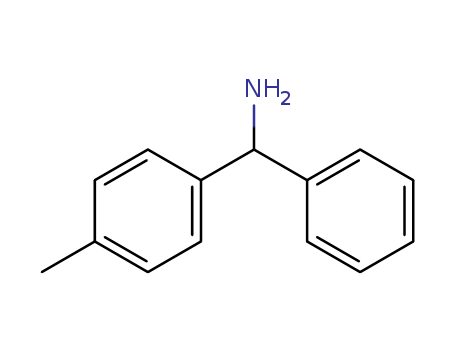10.1016/j.tetlet.2008.06.110
The research focuses on the development of a new method for synthesizing MBHA (4-methylbenzhydrylamine) resin, a widely used solid support for the synthesis of carboxamides or peptide C-terminal amides. The study introduces a benzotriazole-mediated amidoalkylation approach to prepare MBHA resin, utilizing N-[(benzotriazol-1yl)(p-tolyl)methyl]formamide or N-[formamido(p-tolyl)methyl]formamide as key reactants. The experiments involved the reaction of these compounds with benzene in the presence of aluminum chloride to achieve the amidoalkylation of unactivated aromatic compounds like benzene. The resulting products were then subjected to hydrolysis to obtain the MBHA resin, which was characterized by its loading capacity determined through Fmoc titration after coupling with Fmoc-Gly-OH. The resin's performance was evaluated by synthesizing a model peptide, Leu-enkephalin, and analyzing the crude product using HPLC and MALDI-TOF. The study demonstrated that the benzotriazole-mediated amidoalkylation method is effective for synthesizing MBHA resin with high loading capacity and good properties as a solid support for solid-phase peptide synthesis (SPPS).
10.1016/j.ejmech.2008.02.019
The research presents a comprehensive study on the synthesis, in vitro evaluation, and conformational analysis of penetratin and its derivatives as potential antifungal agents. The research involved the synthesis of penetratin (RQIKIWFQNRRMKWKKeNH2) and its derivatives. The synthesis was carried out manually on a p-methylbenzhydrylamine resin (MBHA) using Boc-strategy and standard methodology. Side chain protecting groups used were Tos for Arg and 2-chloro-Z for Lys. The main focus was on their activity against human pathogenic strains of Candida albicans and Cryptococcus neoformans, as well as clinical isolates of C. neoformans. The experiments involved solid phase peptide synthesis using Boc-strategy, antimicrobial susceptibility testing, and a series of computational methods including EDMC calculations, simulated annealing, and molecular dynamics simulations. The peptides were analyzed for their conformational behavior and molecular electrostatic potentials to identify a topographical template for designing new antifungal compounds. The study identified penetratin and certain derivatives as significantly active against Cryptococcus species, with a detailed exploration of their structure-activity relationships and potential as antifungal agents.





